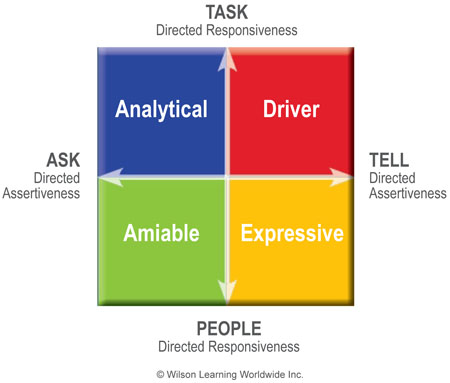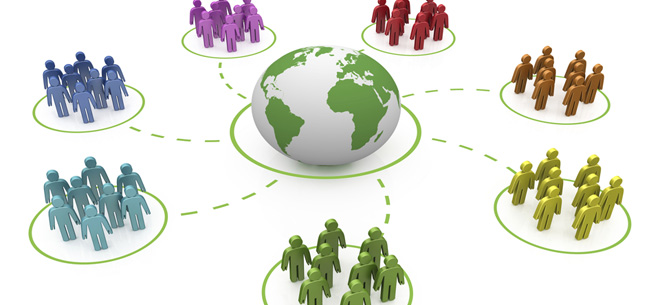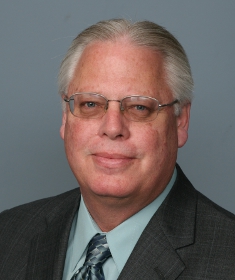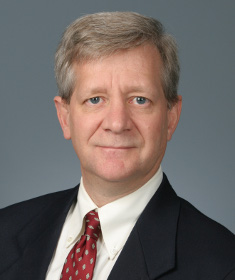When Interpersonal Skills Take Off, Results Soar
Social Styles Versatility: The Engine of Success


Further Reading:
"Social Styles Versatile Communication: Avoiding the Hidden Costs of Communication Misalignment"
What if your company could learn a skill that will eliminate conflict, miscommunication, and slow decisions? And what if I told you that the mechanics team inside a global air fleet company did just that and saw a 56% boost in productivity? Would I get your attention? Thought so.
That skill is called Versatility, and it is perhaps the most powerful interpersonal skill you can have.
Numerous research studies show that diverse experiences are critical to innovation and performance improvement, but diversity naturally places a strain on communication. When people feel there is tension and difficulties in communication, it is difficult to carry out innovative decisions and actions with high energy. The good news is we can take responsibility for managing our communication, behavior, and reducing interpersonal tension by keeping the task focused on solving problems and achieving productivity, efficiency, and employee engagement improvements.1
Versatile Communication Skills
Versatility is the ability to recognize differences in communication preferences and to adapt to make others more open and receptive—creating more effective and productive relationships.

The first step is to recognize communication differences, and the Wilson Learning Social Styles model is the tool to help you. Social Style is based on our preferred communication approaches. Your Social Style varies in terms of your actions on the dimensions of Assertiveness and Responsiveness.
Because about 25% of people fall into each of these four categories, you share a Social Style with only about 25% of the people you meet. Just think about the consequences when we can’t or won’t adapt to the other 75%. Do you see an opportunity here?
“The more I know about you, the more I know about me, and the more I can take responsibility for managing the difference between us.”
If you choose to take responsibility and manage the differences between your Social Style preference with the other 75%, you can create more productive relationships and, as a result, maximize your effectiveness on the job.
The Key Is Versatility
Social Style helps you recognize communication preferences, and Versatility helps you take responsibility for managing differences. The good news is Versatility is a skill that can be learned and mastered. But Versatility requires effort, requiring you to modify your approach to fit others’ approaches, even when it may not be comfortable. You have to make a conscious choice to be Versatile:
- Do I need this relationship to work so I can achieve my results?
- What will be the benefits if I improve this relationship?
- What will be the risks if I do not improve this relationship?
Having chosen to be Versatile, you then have to act on that choice with a process we call the Versatile Response:
1. Identify: What is the person’s Social Style?
You identify others’ Social Styles by focusing on what they value, the environment in which they work best, and how they like to work.
| The Versatile Response2 |
|---|
| IDENTIFY |
|
Identify the person's Social Style. "She or he is..." |
| REFLECT |
|
Based on the person's Social Style, reflect on and describe her or his expectations for interactions with you. "So she or he needs..." |
| MODIFY |
|
Decide how to modify your behaviors to maximize your effectiveness. "Therefore I will..." |
Analyticals, for example:
- Value conservative and practical business decisions
- Rely on structured approach and factual evidence
- Prefer a systematic approach to coming to a recommendation
Amiables tend to:
- Value cooperation in business situations
- Rely on the support of others in shared decision-making
- Prefer an interactive approach to problem-solving
Drivers tend to:
- Be forceful and quick in making decisions
- Flourish in a goal-oriented environment
- Expect others to respond in a timely manner
Expressives tend to:
- Be futuristic in their thinking
- Attempt to make others enthusiastic about ideas
- Prefer a collaborative approach to problem-solving
2. Reflect: What does this person need from me interpersonally?
How you modify your Social Style depends on both the other’s Social Style and the situation. There is no one straightforward solution. An Analytical (or Driver, Amiable, or Expressive) in one situation may need something different in another situation.
An Analytical, for example, may need a more formal and structured approach, or may just need enough time to think things through. An Amiable may need you to be open and honest about your feelings, or need other people to be involved in the decision. A Driver may need you to get right to the point, or focus a little more on the problem and less on the people involved. And an Expressive may need you to be a little more flexible on time, or to hear your excitement for the issue.
So, before going straight from Identify to Modify, pause a second to reflect: What does this Social Style need? And what is needed now?
3. Modify: What can I do to modify my behavior?
People new to Versatility skills sometimes think you have to make big behavior changes to communicate effectively. But just like the old adage “the best things come in small packages,” little changes in Assertiveness and Responsiveness can have a big impact on the effectiveness of communication. Maybe all you need to do is:
- Ask for the other person’s opinion first
- Get to the point quickly
- Use a slower or faster pace
- Use more or less gestures and facial expressions
How might this work in the real world? Here are some examples:
A VP of Research and Development (an Analytical) was frustrated because he was not receiving responses from emails to the VP of Sales (a Driver). Upon reflection, he realized the VP of Sales needed to get right to the point, and the lengthy explanation of the data and how he reached his conclusion was not helping the VP of Sales. So, with the next email, the VP of R&D “flipped” the message; he put the conclusion first, the explanation second. The VP of Sales responded immediately.
The VP of Marketing (a Driver) was having trouble getting the Website Design Manager (an Amiable) to make changes to the corporate website. The VP of Marketing paused for a moment and realized that the Website Design Manager always felt more comfortable when more people were involved in decisions. The VP of Marketing then asked her who else might be able to contribute to this decision and invited them all to a meeting to discuss the changes. After the group made the decisions, the Website Design Manager implemented them almost immediately.
When Soft Skills Yield Hard Results
Equipping your employees and leaders, in all functions, with Versatility skills enables them to address complex challenges, reduce tension and conflict, and build more collaborative relationships throughout the organization. Without communication obstacles, individuals, teams, and work groups can soar as they are free to focus on the work at hand. Join the ranks of the global air fleet maintenance team mentioned earlier who did just that and boost your productivity to new altitudes.
1 Akbar, Hammad, and Shah Faisal Khan, "Tapping Diverse Experiences," International Journal of Knowledge Management, 12, no. 3, (July 2016).
2 “The Business of Versatility.” In Building Relationship Versatility: Social Styles at Work. Wilson Learning Worldwide Inc.
To learn more, contact Wilson Learning at 1.800.328.7937 or complete the online form.










 Please complete this form to download When Interpersonal Skills Take Off, Results Soar | Social Styles Versatility: The Engine of Success.
Please complete this form to download When Interpersonal Skills Take Off, Results Soar | Social Styles Versatility: The Engine of Success.



